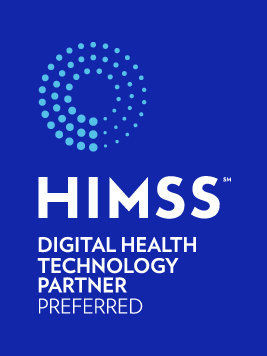HIMSS EMRAM guides healthcare organizations to lay the data foundation that can lead to valuable, actionable insights.
Yale New Haven Hospital used insights drawn from its EMR data to make operational improvements and reduce costs across several of its departments, resulting in an annual savings of $60 million.[1] As part of this initiative, smart alerts based on EMR data guided clinicians to transfer patients efficiently to the right level of care, whether that was an off-site location such as a long-term acute care hospital, a nursing facility or even the patient’s home, reducing the number of avoidable days by 1,541 for those medical long stay patients.
Such interventions often resulted in improved patient satisfaction. “Everybody would rather be at home than in the hospital, so patients were reporting higher satisfaction rates,” said Christina Grimes, RN, EMRAM Digital Health Strategist at HIMSS.
These results clearly illustrate how the value of an EMR multiplies exponentially when the technology that is adopted purposefully addresses data collection and analysis. When an EMR contains valuable, reliable data, users can cull the actionable insights needed to strategically manage performance and support change, according to Grimes, who along with Jeff Fuller, Vice President, Delivery, at Divurgent, spoke about the value of EMR data during the webinar Managing What You Measure: Reusable Data Through Effective EMR Adoption.
An Unfortunate Status Quo
While EMR data can help clinicians and other staff members develop insights that lead to improved results, such data commonly falls short for many healthcare organizations (HCOs).
Indeed, EMR data often produces insights that:
- Take a long time to create
- Show different answers to the same questions across organizational groups
- Frequently show a fraction of the picture (telling “what” without the factors of producing the “what”)
- Are not actionable or connected to workflows
- Are typically incremental (adding to what is not working) as opposed to transformative
- Do not differentiate between “good to know/do” vs. “important to manage/act”
These shortcomings are prevalent for many reasons. First, many HCO leaders overlook the work involved with collecting reliable data — and jump immediately to the “insights” stage. More specifically, data management processes don’t include strategies to strengthen the validity and actionable qualities of data, design insights for action, or integrate change management within the EMR and with data stakeholders’ needs in mind.
Right Data, Right Results
However, if governed correctly, EMR data can enable HCOs to strategically manage performance and support transformation. To ensure that the EMR can be leveraged to glean reliable, actionable insights, it’s important to “establish good strategic performance management at the frontline, when data is being collected and is being accumulated . . .,” according to Fuller. “This should all be part of the EMR adoption,” he said.
This is why the HIMSS Electronic Medical Record Adoption Model (EMRAM) is so important. EMRAM measures evidencebased data at each of its eight stages, and organizations use it to optimize digital work environments, improve performance and financial sustainability, build a sustainable workforce and support an exceptional patient experience.
As a tool developed to measure the impact of the EMR, EMRAM gives healthcare leaders insight into their current EMR capabilities compared to those in the international market, provides a benchmark to grow against and provides a thirdparty, independent attestation of each HCO’s baseline position.
In addition to establishing good data practices upfront, EMRAM also prompts clinicians and other staff members to collaborate for better analytics. Indeed, HIMSS states that “analytics competency cannot be purchased; it is an organizational trait and set of skills that must be encouraged, nurtured and developed over time.” Fuller noted that this philosophy points to the importance of stakeholder collaboration.
With this type of institutional focus, HCOs can more expediently zero in on reliable data or a known source of truth to make decisions that will optimize strategic performance.
“Good data really is a common denominator for new innovative care,” Fuller emphasized. “We all are familiar with organizations where there are literally thousands of dashboards that are available to inform stakeholders about how to make better decisions. They could contain tens of thousands of measures. So where do you look for the truth? Where do you look for intelligence to be able to really make a difference — and how do you learn from it in order to take action to improve your situation?”
[Watch the webinar – Managing What You Measure: Reusable Data Through Effective EMR Adoption]
Beyond Paperless Goals
To accumulate and leverage reliable data, however, EMRs need to evolve into more than just documentation systems, according to Grimes. “The EMR needs to become a tool that clinicians can leverage to surface the right data at the right time so they can make an informed decision about the right type of care,” she said.
Fortunately, EMRAM has also evolved accordingly. Initially, EMRAM was designed to focus on moving HCOs to a paperless environment. Now, however, the model supports organizations that are looking to leverage data for the greater good. In addition, the HIMSS Digital Health Indicator (DHI) measures progress toward a digital health ecosystem in which operational and care delivery processes are outcomes-driven and informed by data and real-world evidence to achieve exceptional quality, safety and sustainable performance.
What’s more, EMRAM promotes continual growth, helping HCOs move toward greater levels of data sophistication. The model is updated every three years to provide HCOs with additional opportunities to use data insights that can improve patient safety, clinical outcomes, operational efficiencies and financial results.
The most recent iteration of EMRAM, for example, pushes HCOs to focus on patient engagement. It prompts HCOs to derive insights from data that will help them better encourage patients to be a part of their own health experience and wellness.
Overall, the model helps organizations learn from a third-party independent analysis of where they are today — while providing a map of where they might want to go tomorrow. When HCOs work through EMRAM with partners such as Divurgent, an IT consulting firm, it’s possible to create a plan of action for tapping into data-driven insights that will improve performance across the enterprise.
“When working with our partners like Divurgent, for instance, we actually help organizations create a roadmap to improve any focus areas that they’d like to allocate more resources towards,” Grimes concluded. “And what we saw with Yale New Haven is that, by focusing its efforts and resources, it was really able to focus on those long-stay patients and reduce cost across several of its departments.”
[1] HIMSS. October 2015. Yale New Haven process improvement projects.
Achieve a successful digital transformation.
As a HIMSS Preferred Partner, we’ll help you gain strategic insights, enhance your tech, and enable a successful transformation.



